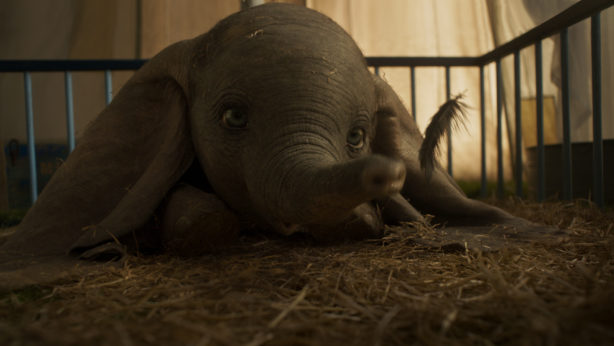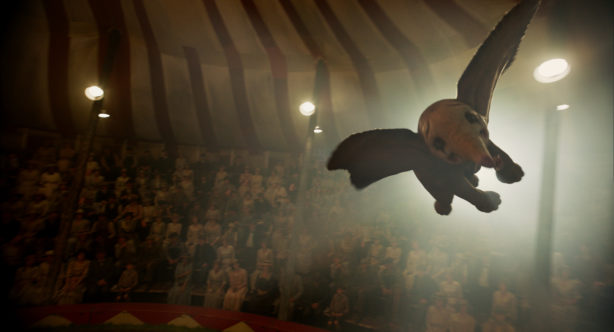For nearly eight decades, audiences have been charmed by the baby elephant with oversized ears and expressive blue eyes who made his big-screen debut in the 1941 animated classic, Dumbo, just the fourth release from The Walt Disney Studios. Dumbo takes flight again in Disney’s new live-action adventure, opening today, brought to life on screen by visual effects experts who pay tribute to Dumbo’s hand-drawn history while using the latest technology to evolve the character for a new generation of fans.
The team, led by visual effects supervisor Richard Stammers, set out to strike a balance between the character fans remember and a realistic, live-action animal that behaves as a real elephant would. Stammers notes that Dumbo’s “oversized, babylike head; his big blue eyes; short stubby legs and cute little body” are some of his more memorable physical traits in the original film, but he’s also quick to point out that these distinctive characteristics are practical, as well as endearing. Dumbo’s big ears necessitate a large head… his sizeable head necessitates eyes of similar proportion… and, for a character that does not speak, those deep blue eyes become a primary means of expression. “It was very important to be able to read [Dumbo’s] emotions through his eyes, and that was something that was really important in the original cartoon,” says Stammers.

As they embarked upon creating a pachyderm protagonist for the same studio that immersed audiences in 2016’s new high-tech version of The Jungle Book, Stammers’ U.K.-based team visited local zoos where they filmed elephants from multiple angles to provide a vast library of reference footage that included subtle motions, “like the way the trunk moves or the tail swishes, or the way the weight gets transferred from one leg to the other just when they’re standing still,” Stammers explains. Using the technology developed for The Jungle Book—but taking it further—the team devised a new way to render and create skin for Dumbo, Mrs. Jumbo, and the other elephants. “Elephants have this incredibly loose and wrinkly skin that movies in a specific way, and the way that we traditionally approach that just wasn’t going to be good enough for what we needed to do for this movie,” Stammers says.
And while the VFX team’s technical innovations were driven by careful observance of real-life elephants, they had to think outside of the box when it came to sending Dumbo airborne. “There’s a matter of suspension of disbelief in getting a 90-kilo elephant off the ground,” Stammers acknowledges. To create Dumbo’s more fantastical mid-air maneuvers, Stammers and the team studied butterflies and manta rays for wing dynamics and movements more evocative of the elephant’s fluttering ears. According to Stammers, it was also key to show the amount of effort Dumbo had to make to lift his hefty body off the ground.

During their lengthy development process, the VFX team built an animation rig with the scope to encompass a range of facial expressions. Ultimately, however, they moved away from overly expressive eyebrow and mouth movements in favor of subtle body language, matching some poses to iconic shots from the animated classic, such as tender moments between Dumbo and his mother. “We went through that process of doing a lot to the animation, almost to the point where we were doing too much. We could actually pull back a bit and do a lot less and get a better result,” Stammers details, adding, “That was a really interesting moment of realization, how well we could convey emotions with less movement.” The simplicity that made an animated Dumbo so special nearly 80 years ago endures in the elephant’s modern-day counterpart.